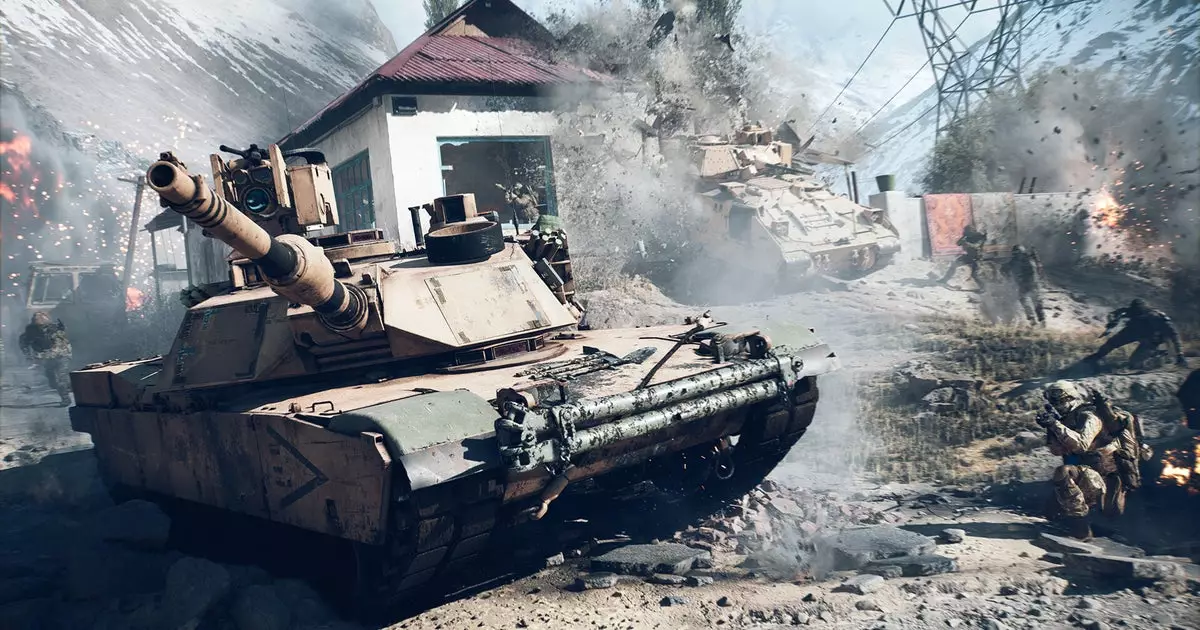In the realm of multiplayer shooting games, especially franchises as established as Battlefield, one prevailing assumption is that a finely tuned balance creates the most engaging experience. However, the insights gleaned from Battlefield 6’s beta reveal that embracing imperfections—particularly in vehicle performance—might be a deliberate strategy rather than mere oversight. Frequently, developers aim for initial underpowered vehicles, not because they dismiss their importance, but because this approach balances the complex dance between player skill, vehicle durability, and emerging tactics.
This perspective flips the traditional narrative on its head. Instead of viewing weaker vehicles as a flaw, they become a foundational canvas that allows players’ mastery to shape gameplay dynamically. A vehicle that feels fragile at launch invites innovation, forcing players to strategize around its vulnerabilities, whether through teamwork or improvisation. Such an approach challenges static notions of fairness and encourages adaptive playstyles that evolve as players learn the environment and mechanics.
The Continuous Balancing Act and Its Implications
Developers are caught in a perpetual cycle of balancing—adjusting vehicle resilience, damage output, and responsiveness—to keep gameplay fresh and challenging. The acknowledgment from Battlefield 6’s lead producer, David Sirland, that vehicles may be intentionally “lowballed” initially underscores a strategic tolerance for imbalance. It is an admission that perfect equilibrium is a myth; instead, balance can be a moving target, sculpted by player ingenuity and emergent gameplay.
This ongoing process is more than just tweaking numbers; it’s about fostering an environment where the game’s systems are responsive to how players interact with them. For instance, if engineers armed with anti-tank mines dominate the battlefield, the developers might temper vehicle armor or mobility to inject further complexity. Such incremental changes prevent stagnation and unlock new layers of tactical depth. This fluidity demonstrates that balancing is less about hitting a static target and more about creating a resilient ecosystem capable of self-adjustment.
Strategic Deliberation in the Face of Player Evolution
One of the most compelling insights is the idea that developers may ship a game perceived as “unbalanced” intentionally, betting on how the community will adapt. This predictive calculus relies on understanding player behavior—anticipating that players will discover new strategies, exploit weaknesses, and ultimately reshape the meta. Thus, initial vehicle fragility might serve as a sandbox that encourages experimentation, which then informs subsequent balance updates.
This approach bears risks: overly weak vehicles may frustrate players, while too powerful ones risk trivializing other gameplay aspects. However, the potential payoff is a richer, more engaging experience that keeps players invested over time. By consciously releasing a slightly unpolished state, developers capitalize on the community’s ability and willingness to evolve their skills, fostering a sense of collective mastery rather than merely imposing an artificial equilibrium from the outset.
The Broader Impact: Innovation Driven by Imperfection
Ultimately, the ongoing balancing choices in Battlefield 6 exemplify a broader industry trend—imperfection as a catalyst for creativity and engagement. When vehicles are not overpowered from the start, players are compelled to innovate—whether through tactical teamwork, exploiting terrain, or crafting new strategies—thus deepening the gameplay experience. This iterative process creates a dynamic environment where each update, each tweak, becomes an opportunity for discovery.
By deliberately introducing vulnerabilities, developers challenge the traditional hierarchy of power within the game. This strategy encourages players to think critically about resource management, positioning, and risk assessment, elevating the game from a mere shooter to a platform for strategic experimentation. The perceived “flaws” become, paradoxically, its greatest strengths—forcing players to adapt and evolve, ensuring Battlefield 6 remains compelling long after launch.

